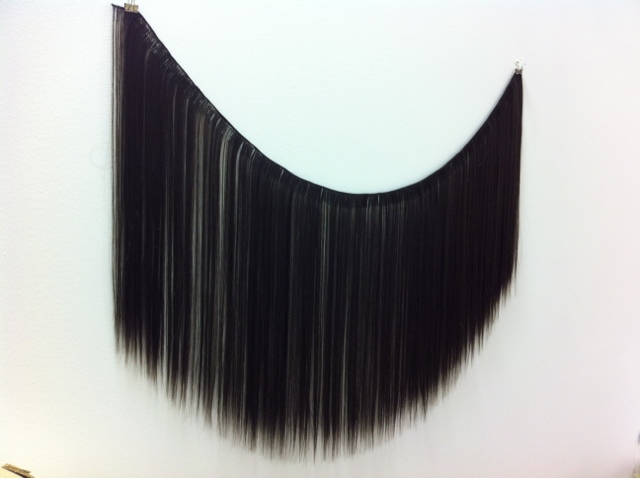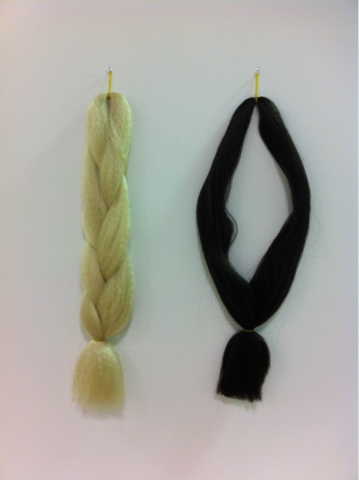It's about time I learn me some Merleau Ponty...
according to wikipedia:
Merleau-Ponty emphasized the body as the primary site of knowing the
world, a corrective to the long philosophical tradition of placing
consciousness as the source of knowledge, and his insight that the body
and that which it perceived could not be disentangled from each other.
The articulation of the primacy of embodiment led him away from
phenomenology towards what he was to call “indirect ontology” or the
ontology of “the flesh of the world” (la chair du monde), seen in his last incomplete work, The Visible and Invisible, and his last published essay, “Eye and Mind”.
http://www.biolinguagem.com/biolinguagem_antropologia/merleauponty_1964_eyeandmind.pdf
"All flesh, and even that of the world, radiates beyond itself. But whether or not one is, depending on the era and the "school," attached more to manifest movement or the monumental, the art of painting is never altogether outside time, because it is always within the carnal. Now perhaps we have a better sense of how much is contained in that little word "see." Seeing is not a certain mode of thought or presence to self; it is the means given me for being absent from myself, for being present from within at the fission of Being only at the end of which do I close up into myself...
Cartesian can believe that the existing world is not visible, that the only light is of the mind, and that all vision takes place in God. A painter cannot agree that our openness to the world is illusory or indirect, that what we see is not the world itself, or that the mind has to do only with its thoughts or another mind. He accepts, with all its difficulties, the myth of the windows of the soul; what is without place must be subjected to a body—or, what is even more: what is without place must be initiated by the body to all the others and to nature. We must take literally what vision teaches us: namely, that through it we touch the sun and the stars, that we are everywhere at once, and that even our power to imagine ourselves elsewhere—"I am in Petersburg in my bed, in Paris, my eyes see the sun"—or freely to envision real beings, wherever they are, borrows from vision and employs means we owe to it. Vision alone teaches us that beings that are different, "exterior," foreign to one another, are yet absolutely together, are "simultaneity"; which is a mystery psychologists handle the way a child handles explosives. Robert Delaunay says succinctly, "The railroad track is the image of succession which comes closest to the parallel: the parity of the rails." The rails converge and do not converge; they converge in order to remain equidistant farther away. The world is in accordance with my perspective in order to be independent of me, is for me in order to be without me, to be a world. The "visual quale" gives me, and is alone in doing so, the presence of what is not me, of what is simply and fully. It does so because, as a texture, it is the concretion of a universal visibility, of one sole Space that separates and reunites, that sustains every cohesion (and even that of past and future, since there would be no such cohesion if they were not essentially parts of the same space). Every visual something, as individual as it is, functions also as a dimension, because it is given as the result of a dehiscence of Being. What this ultimately means is that the hallmark of the visible is to have a lining of invisibility in the strict sense, which it makes present as a certain absence. "In their time, our erstwhile opposites, the Impressionists, were perfectly right in electing domicile among the scrub and stubble of the daily spectacle. As for us, our heart throbs to get closer to the depths.... These oddities will become...realities...because instead of being limited to the diversely intense restoration of the visible, they also annex the occultly perceived portion of the invisible. " There is that which reaches the eye head on, the frontal properties of the visible; but there is also that which reaches it from below—the profound postural latency whereby. the body raises itself to see—and that which reaches vision from above like the phenomena of flight, of swimming, of movement, where it participates no longer in the heaviness of origins but in free accomplishments. Through vision, then, the painter touches both extremities. In the immemorial depth of the visible, something has moved, caught fire, which engulfs his body; everything he paints is in answer to this incitement, and his hand is "nothing but the instrument of a distant will." Vision is the meeting, as at a crossroads, of all the aspects of Being. "A certain fire wills to live; it wakes. Working its way along the hand's conductor, it reaches the canvas and invades it; then, a leaping spark, it arcs the gap in the circle it was to trace: the return to the eye, and beyond." There is no break at all in this circuit; it is impossible to say that here nature ends and the human being or expression begins. It is, then, silent Being that itself comes to show forth its own meaning. Herein lies the reason why the dilemma between figurative and non figurative art is wrongly posed; it is at once true and uncontradictory that no grape was ever what it is in the most figurative painting and that no painting, no matter how abstract, can get away from Being, that even Caravaggio's grape is the grape itself. This precession of what is upon what one sees and makes seen, of what one sees and makes seen upon what is—this is vision itself. And to give the ontological formula of painting we hardly need to force the painter's own words, Klee's words written at the age of thirty-seven and ultimately inscribed on his tomb: "I cannot be grasped in immanence.""
(emphasis by me)
Saturday, March 16, 2013
Friday, March 1, 2013
two more
Wednesday, February 27, 2013
updated statement
Evocations of the flesh - in material, form, and manner - signify a meeting point for dualisms of all sorts. My studio practice is rooted in the notion that a richness can be found in the blurry space between alternatives: what is there formed by what is not, and what is not there formed by what is. I like to invert and/or blur the boundaries between these two states in attempts to evoke feelings of familiar ambiguity, comfortable tension, and reluctant desire.
Skin is a barrier, a wall, denoting interior from exterior (subject from object), yet it’s full of its own physical intricacies, hollows and bumps that muddle those very distinctions. Just as the material of our bodies is made up of many layers, so too are the flesh's various associations. A subtle surreality is evoked, whereby the flesh functions simultaneously on physical, psychological, metaphorical, and metaphysical levels.
My work is influenced by an existential understanding of holes, which is rooted in an ontological (and thus pre-sexual) desire to fill voids. While the Freudian model speaks of an “original” hole that renders subsequent holes only metaphors, the existentialists suggest that, in a sense, all holes plead obscurely to be filled. They are appeals to the triumph of the full over the empty, of existence over nothingness.
Thus the physical finds its parallel in the spiritual: the body functions as a microcosm, continually giving glimpses into the beyond. Flesh acts as a tangible metaphor - at once a barrier and a carrier of matter and meaning.
Skin is a barrier, a wall, denoting interior from exterior (subject from object), yet it’s full of its own physical intricacies, hollows and bumps that muddle those very distinctions. Just as the material of our bodies is made up of many layers, so too are the flesh's various associations. A subtle surreality is evoked, whereby the flesh functions simultaneously on physical, psychological, metaphorical, and metaphysical levels.
My work is influenced by an existential understanding of holes, which is rooted in an ontological (and thus pre-sexual) desire to fill voids. While the Freudian model speaks of an “original” hole that renders subsequent holes only metaphors, the existentialists suggest that, in a sense, all holes plead obscurely to be filled. They are appeals to the triumph of the full over the empty, of existence over nothingness.
Thus the physical finds its parallel in the spiritual: the body functions as a microcosm, continually giving glimpses into the beyond. Flesh acts as a tangible metaphor - at once a barrier and a carrier of matter and meaning.
Wednesday, February 20, 2013
hair cuts
Since starting to mess around with hair extensions and wigs in the studio, I've been reminded of these cut-out locks of hair stashed in my collage materials - I started cutting them out a while back, but never really found a use for them. But now it seems entirely appropriate. I like the loaded simplicity of them.
Monday, January 28, 2013
hairness
Thinking about introducing some new materials... It comes with a lot of baggage but I think I'm up for it.
Monday, January 7, 2013
Subscribe to:
Posts (Atom)








